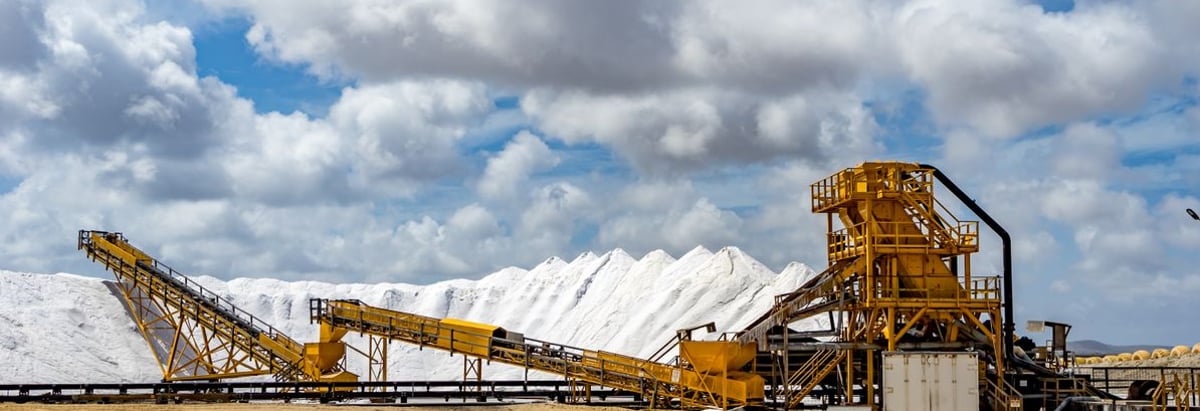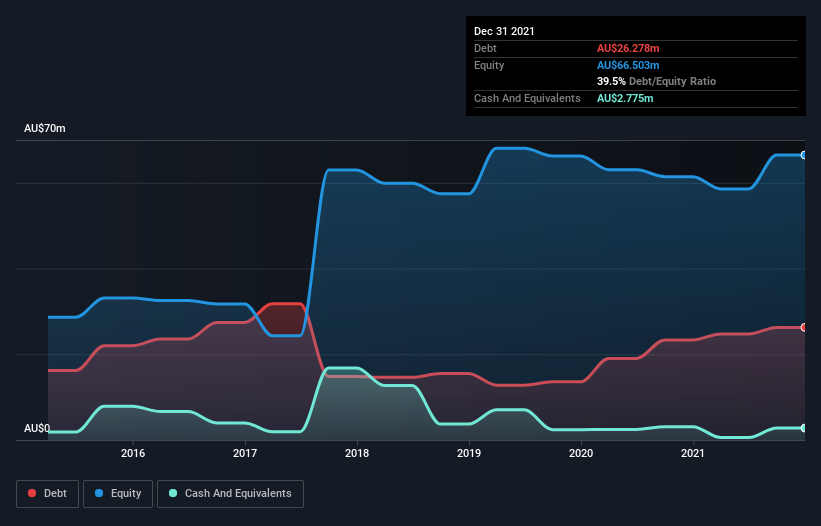
The external fund manager backed by Berkshire Hathaway's Charlie Munger, Li Lu, makes no bones about it when he says 'The biggest investment risk is not the volatility of prices, but whether you will suffer a permanent loss of capital.' So it might be obvious that you need to consider debt, when you think about how risky any given stock is, because too much debt can sink a company. Importantly, Aeon Metals Limited (ASX:AML) does carry debt. But the real question is whether this debt is making the company risky.
Why Does Debt Bring Risk?
Debt and other liabilities become risky for a business when it cannot easily fulfill those obligations, either with free cash flow or by raising capital at an attractive price. In the worst case scenario, a company can go bankrupt if it cannot pay its creditors. However, a more usual (but still expensive) situation is where a company must dilute shareholders at a cheap share price simply to get debt under control. Of course, plenty of companies use debt to fund growth, without any negative consequences. When we think about a company's use of debt, we first look at cash and debt together.
View our latest analysis for Aeon Metals
What Is Aeon Metals's Net Debt?
As you can see below, at the end of December 2021, Aeon Metals had AU$26.3m of debt, up from AU$23.3m a year ago. Click the image for more detail. However, it does have AU$2.78m in cash offsetting this, leading to net debt of about AU$23.5m.

A Look At Aeon Metals' Liabilities
The latest balance sheet data shows that Aeon Metals had liabilities of AU$1.36m due within a year, and liabilities of AU$26.3m falling due after that. On the other hand, it had cash of AU$2.78m and AU$334.0k worth of receivables due within a year. So its liabilities outweigh the sum of its cash and (near-term) receivables by AU$24.5m.
This is a mountain of leverage relative to its market capitalization of AU$38.7m. This suggests shareholders would be heavily diluted if the company needed to shore up its balance sheet in a hurry. When analysing debt levels, the balance sheet is the obvious place to start. But you can't view debt in total isolation; since Aeon Metals will need earnings to service that debt. So when considering debt, it's definitely worth looking at the earnings trend. Click here for an interactive snapshot.
Since Aeon Metals has no significant operating revenue, shareholders probably hope it will develop a valuable new mine before too long.
Caveat Emptor
Importantly, Aeon Metals had an earnings before interest and tax (EBIT) loss over the last year. Its EBIT loss was a whopping AU$5.6m. When we look at that and recall the liabilities on its balance sheet, relative to cash, it seems unwise to us for the company to have any debt. Quite frankly we think the balance sheet is far from match-fit, although it could be improved with time. Another cause for caution is that is bled AU$10.0m in negative free cash flow over the last twelve months. So in short it's a really risky stock. There's no doubt that we learn most about debt from the balance sheet. However, not all investment risk resides within the balance sheet - far from it. For instance, we've identified 4 warning signs for Aeon Metals (2 are a bit unpleasant) you should be aware of.
Of course, if you're the type of investor who prefers buying stocks without the burden of debt, then don't hesitate to discover our exclusive list of net cash growth stocks, today.
New: Manage All Your Stock Portfolios in One Place
We've created the ultimate portfolio companion for stock investors, and it's free.
• Connect an unlimited number of Portfolios and see your total in one currency
• Be alerted to new Warning Signs or Risks via email or mobile
• Track the Fair Value of your stocks
Have feedback on this article? Concerned about the content? Get in touch with us directly. Alternatively, email editorial-team (at) simplywallst.com.
This article by Simply Wall St is general in nature. We provide commentary based on historical data and analyst forecasts only using an unbiased methodology and our articles are not intended to be financial advice. It does not constitute a recommendation to buy or sell any stock, and does not take account of your objectives, or your financial situation. We aim to bring you long-term focused analysis driven by fundamental data. Note that our analysis may not factor in the latest price-sensitive company announcements or qualitative material. Simply Wall St has no position in any stocks mentioned.
About ASX:AML
Aeon Metals
Engages in the exploration for and evaluation of mineral properties in Australia.
Slight and slightly overvalued.
Market Insights
Community Narratives




